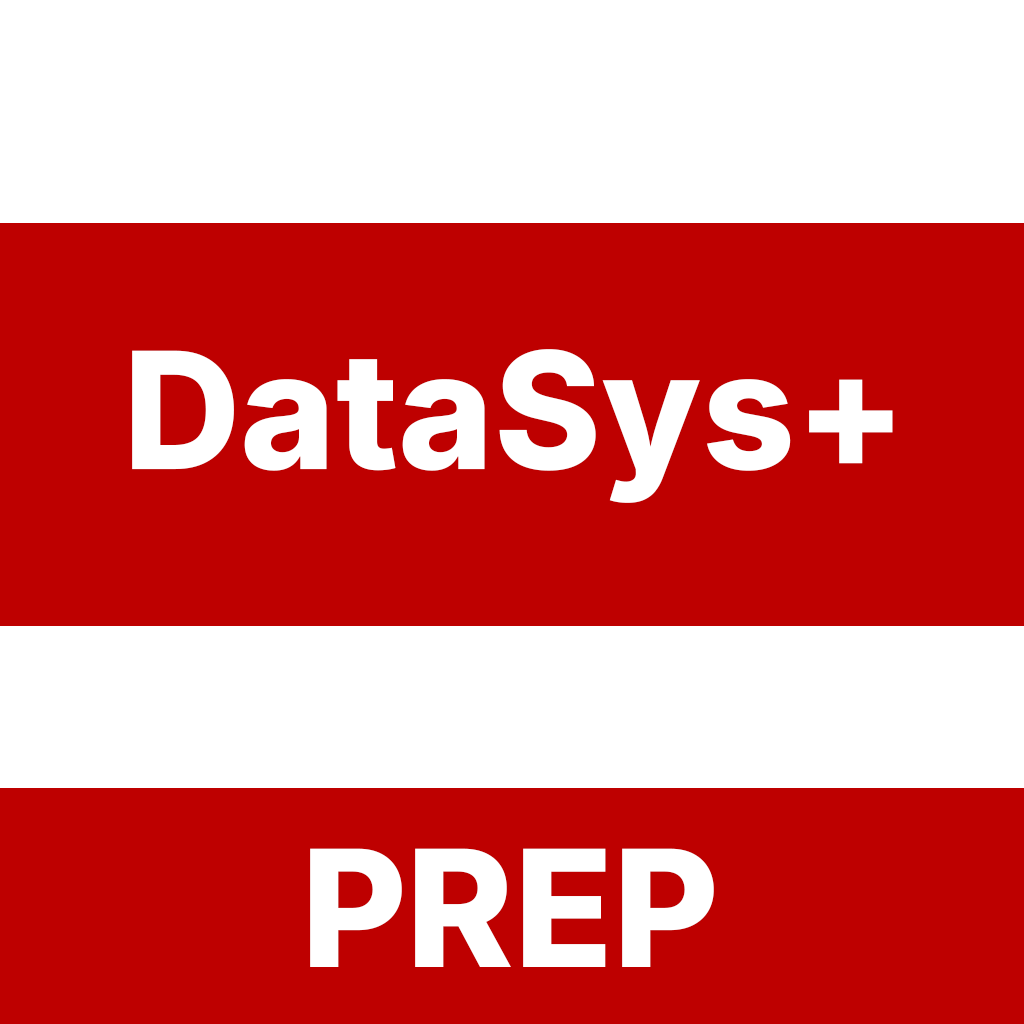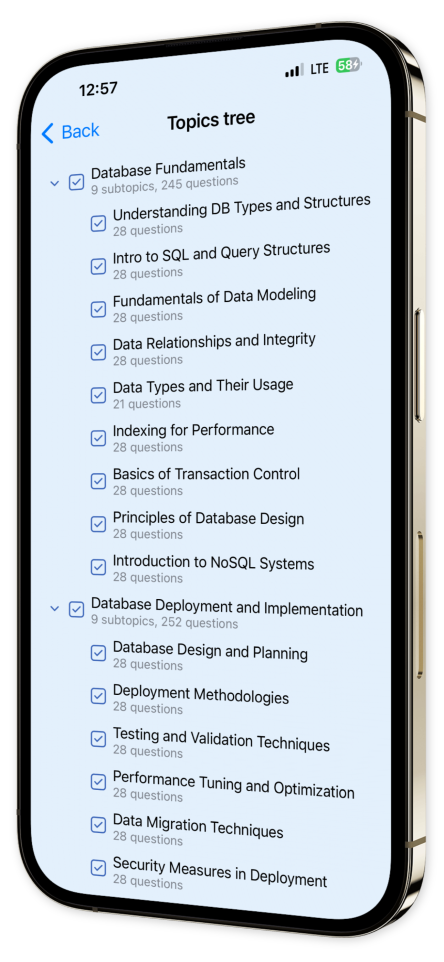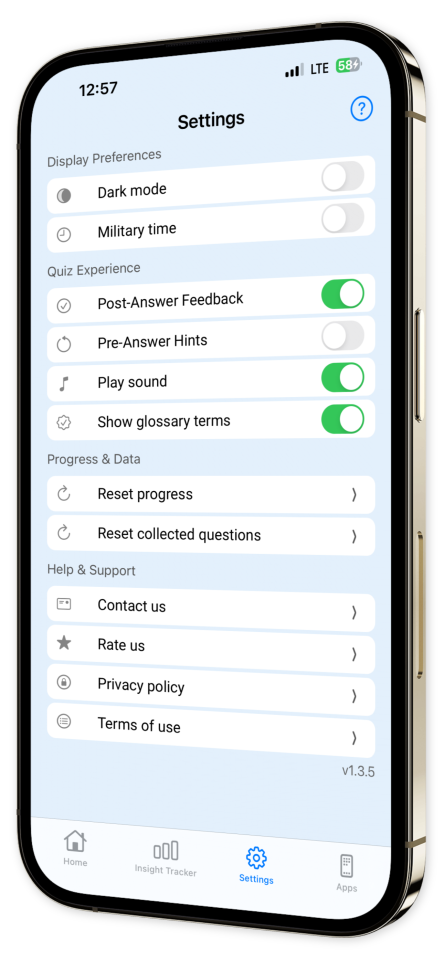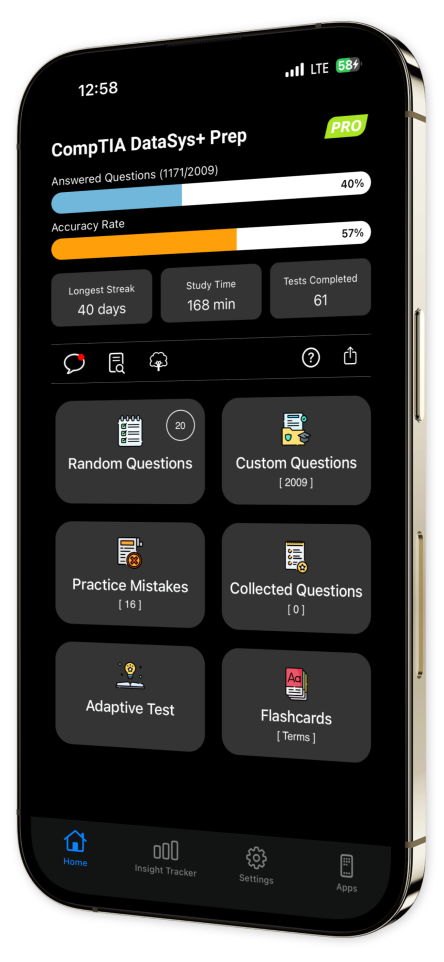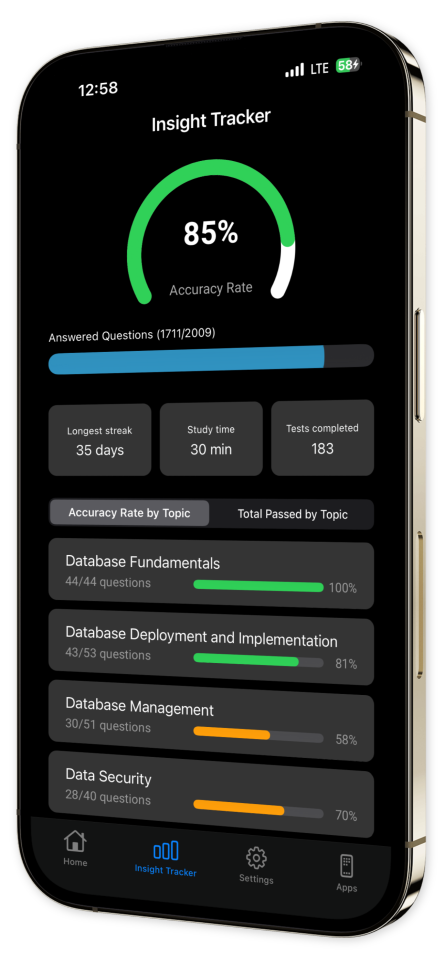
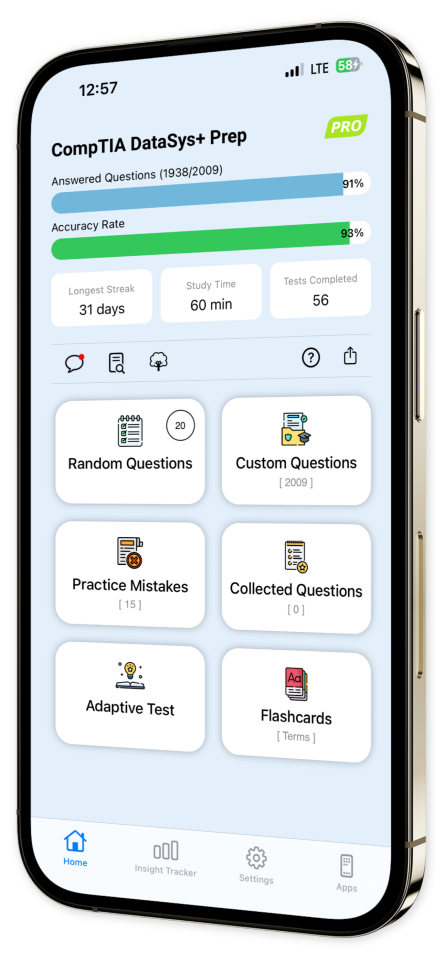
CompTIA DataSys+ Prep iOS and Android App
Refine Your Database Mastery with Precision!
Introducing CompTIA DataSys+ Prep, the advanced test preparation app designed for experienced professionals seeking to achieve CompTIA DataSys+ (DS0-001) certification. Tailored for seasoned database administrators and experts in data infrastructure, this app offers cutting-edge tools to sharpen your capabilities in deploying, securing, and optimizing mission-critical data systems.
Advanced Practice Modules:
Our curated question sets dive deep into the nuances of database architecture, performance optimization, security protocols, and high-availability systems. Each scenario-based question is crafted to challenge your problem-solving abilities and ensure mastery of concepts essential for real-world application in enterprise-level environments.
Customizable Expert-Level Assessments:
Pinpoint your expertise by crafting highly specialized tests focusing on areas such as advanced SQL scripting, scalable database deployments, data governance, and disaster recovery planning. With the flexibility to focus on specific domains, you’ll be able to target the exact areas that align with your expertise and industry demands.
Insightful Performance Analytics:
Leverage detailed analytics to monitor your performance with precision. Identify the areas where you excel and uncover opportunities for further refinement, all while tracking your progress across advanced competencies required for enterprise-grade data management.
Trusted by top-tier professionals, CompTIA DataSys+ Prep is designed to take your expertise to the next level. Download now and ensure you're ready to excel in securing, managing, and optimizing complex data systems.
Content Overview
Explore a variety of topics covered in the app.
Example questions
Let's look at some sample questions
What is the role of SSL in database security during deployment?
It encrypts data in transitIt stores dataIt monitors network trafficIt manages user accounts
SSL (Secure Sockets Layer) is used to encrypt data during transmission, preventing unauthorized access to the information while it is in transit between the database and the client.
Which of the following is a popular tool for version control in databases?
SQL Server Management StudioOracle Data PumpMySQL WorkbenchLiquibase
Liquibase is a popular open-source tool for tracking, managing and applying database schema changes over time, hence it can be used for version control in databases.
What is the purpose of database shrinking in routine maintenance?
To improve query optimizationTo reduce disk space usageTo check for data corruptionTo backup the database
Database shrinking is used to reduce the physical size of the database by removing empty pages. This helps to free up disk space.
What is the purpose of the 'MAXVALUE' parameter in a database?
To set the maximum size of the databaseTo set the maximum value of an integerTo set the maximum value for a sequenceTo set the maximum number of users
The 'MAXVALUE' parameter in a database is used to set the maximum value for a sequence. It defines the upper limit to which a sequence can generate sequence numbers.
What is the role of a Data Protection Officer (DPO) under GDPR?
To market data protection productsTo ensure an organization adheres to GDPR regulationsTo encrypt all data stored by the organizationTo prosecute data breaches
Under the General Data Protection Regulation (GDPR), a Data Protection Officer (DPO) is required in certain cases. The DPO's role is to ensure the organization adheres to the principles and regulations of GDPR.
Which encryption method is more secure for protecting data in transit?
Symmetric encryptionAsymmetric encryptionBoth are equally secureNeither is secure
Asymmetric encryption is more secure for protecting data in transit. It uses two keys - a public key for encryption and a private key for decryption. This makes it more difficult for attackers to decrypt the data, even if they have the public key.
What is the first step in developing a disaster recovery plan?
Identifying critical systems and dataDeveloping emergency response proceduresTraining employees on their roles during a disasterTesting the disaster recovery plan
The first step in developing a disaster recovery plan is identifying critical systems and data. This step is crucial for determining what needs to be protected in the event of a disaster.
What does a risk mitigation strategy aim to do?
Increase the likelihood of risksDecrease the impact of risksEliminate all risksIdentify potential risks
A risk mitigation strategy aims to decrease the impact of risks. While it would be ideal to eliminate all risks, this is often not possible or practical.
Which of the following is not a requirement of the Payment Card Industry Data Security Standard (PCI DSS)?
Encrypting cardholder dataUsing a firewallPerforming regular security auditsStoring all cardholder data
PCI DSS does not require all cardholder data to be stored. In fact, it encourages organizations to not store sensitive cardholder data unless absolutely necessary.
Which database type is most suitable for handling time-series data in IoT?
Relational DatabaseDocument-oriented DatabaseTime-series DatabaseGraph Database
Time-series databases are specifically designed to handle time-stamped data, which is common in IoT applications. These databases efficiently store and retrieve time-series data, making them ideal for IoT data management.
